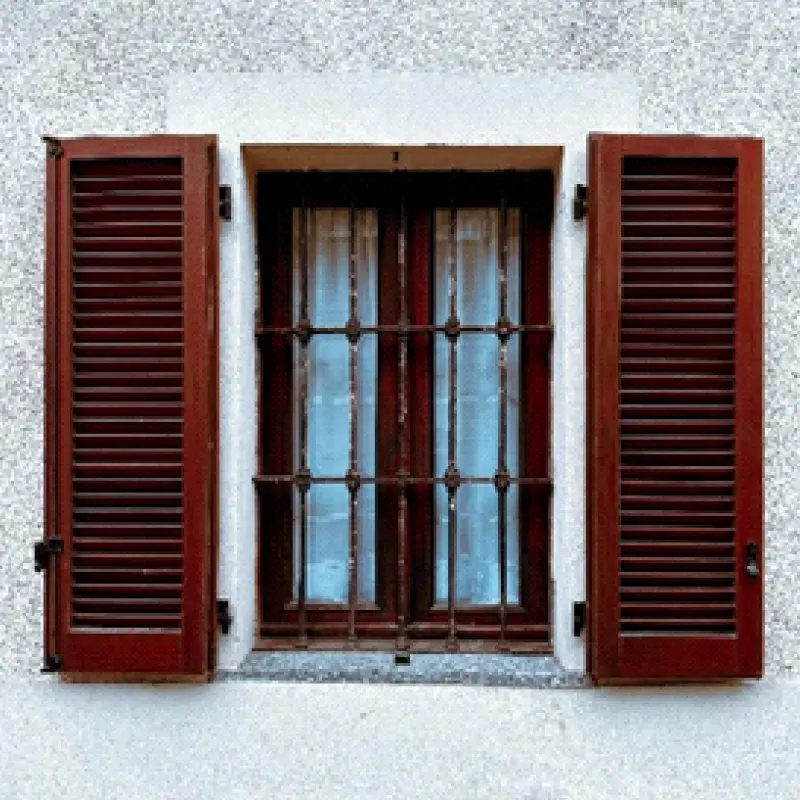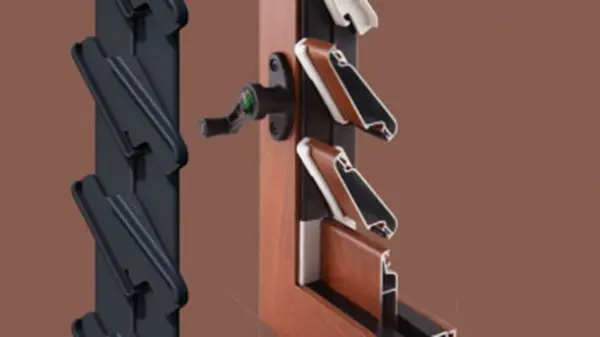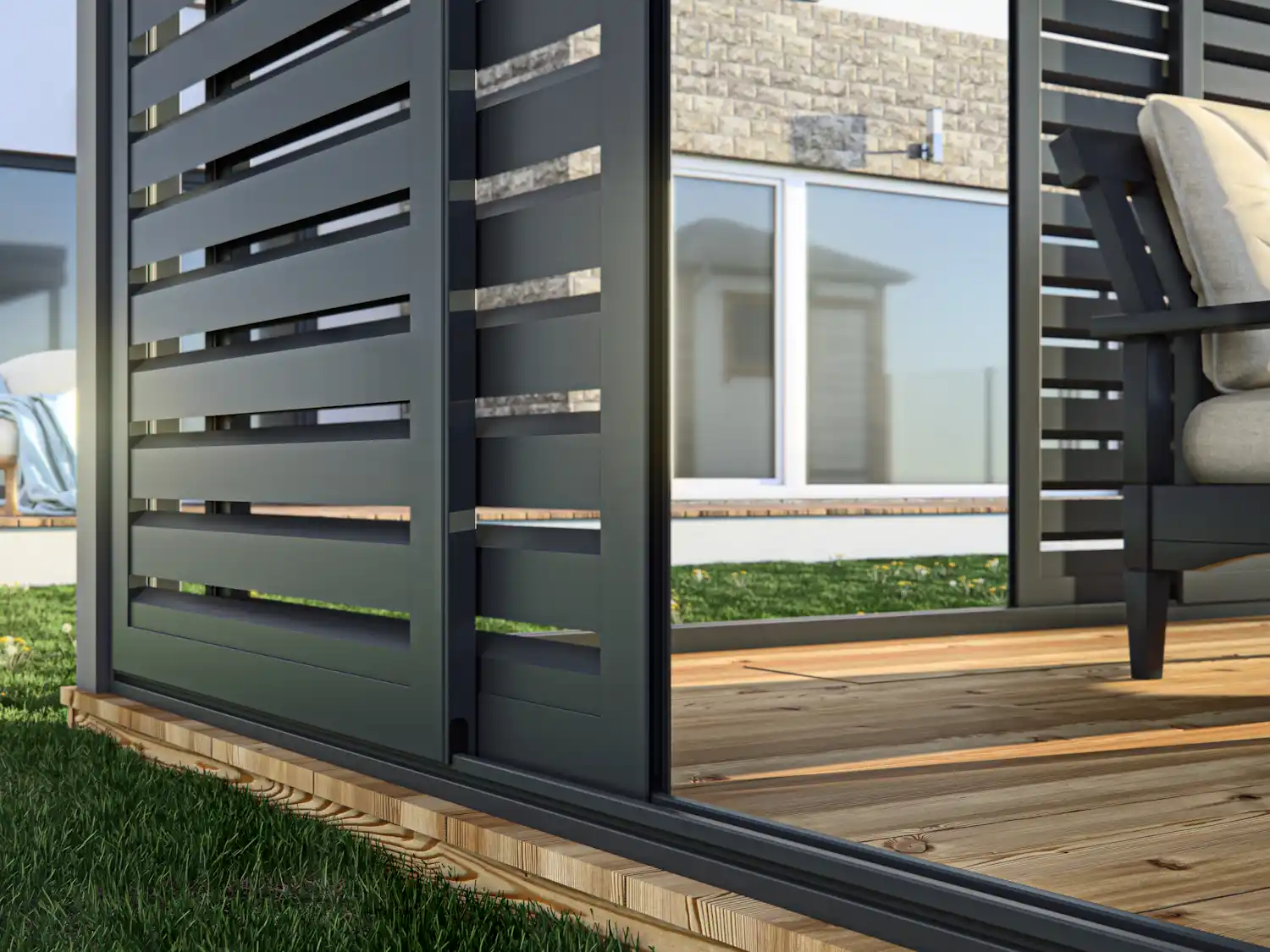The beginnings of written history, the development of civilization and the search for a more organized and meaningful life brought with them the need for a better way to control the influence of atmospheric conditions on the home in which people lived.
The discovery of shutters and shades made them an indispensable addition to every window opening.
The history of shutters and shades
The need for functionality and protection
In order for man to devote more time to higher ideals and goals of life, he looked at finding ways to simply and efficiently take care of all his basic needs. From easy access to a clean source of water to an intelligent system of irrigation and animal husbandry, including the safety and sustainability of the house from storms and atmospheric influences – if all these segments were properly arranged, more time would be found for the development of other things.
The ideal of development and demand for a higher truth has remained the same throughout the history of developed societies, and the search for automation of the basics of life, as well as their optimization – has always remained a fundamental segment of society. To this day, man tries to put his life in order as best as possible so that he may dedicate the rest of his time to other segments of life.
Where this was not achieved, where there was no need and desire for it, the development of more advanced societies did not occur.
The history of shutters and shades begins with the desire for functionality and protection. The quality of construction and the architecture of the buildings in which people lived entailed the design and development of shutters and shades. Window openings themselves originally fulfilled two basic functions: the flow of air and light.
However, without any addition on them, these openings did not protect the building or make life inside it more comfortable and better. Issues causes by wind, dirt, rain, and even the question of privacy itself was by no means solved with just an ordinary window opening. The invention of shutters and shades gradually solved this problem throughout history in an increasingly high-quality and efficient way.

Shades as a necessity for a better quality of life
It is difficult to determine exactly who first invented and came up with the idea of shades on their household openings, but there is various evidence of the use of some form of shades. For example, the Egyptians used rolled up papyrus and placed it on the openings of their buildings to prevent the spread of heat inside the home. Bamboo was used in a similar way in China.
The development of roads and the use of horses as the main means of transportation encouraged the Romans to place wet cloth on window openings to prevent dust from entering their homes. This is exactly the beginning of the so-called “Roman blinds” which are used today in the form of roller blinds. The Romans aesthetically enriched their original idea with colors and ornaments.

An example of Roman blinds
Coatings on window openings could be wet or dry, and regardless of whether they were made of the mentioned fabric, bamboo or papyrus, they represented one of the first forms of air conditioning. Ancient civilizations and the first materials carefully arranged, strengthened and made it possible to raise and lower them.
The picture shows an example of an old house where a combination of full panel shutters with Roman shades is used on the first floor, while on the ground floor the idea is to create complete privacy with full wooden shutters of a unique shape.
Here we are talking about the gradual development of large curtains inside the building or later on blinds, which today would lead to the most modern application of roller blinds and blinds that can be automated with electric motors.
There is a slight difference between shades and blinds. Shades originally consisted of a single piece of material, whereas blinds developed out of them with the addition of having adjustable slats.
The history of shutters and shades is filled with such innovative applications and solutions on various objects
However, the first application of “Venetian shades” or blinds was noticed in the Middle East in Persia around the year 1100. Through trade routes, this idea was eventually brought to Italy, where it began to be widely applied, and its epicenter of influence was found precisely in Venice.
The use of this form of shade gradually spread to France and Spain, and the name used to describe them would always reflect their origin: “les persiennes” or “las persianas”. In modern Italian, “persiana” is still used when talking about blinds, although it is more and more used for shutters.
Venetian shades quickly became a symbol of high status in society, so they were used in all major cities and in richer environments. However, it was not until 1769 that Edward Bevan from England was awarded a patent for Venetian blinds. In his format of these shades, he placed wooden slats in a frame that allowed the slats to be moved and thereby allow the desired amount of light.
Later, in 1841, John Hampson developed a mechanism that made it possible to control the angle at which the slat or slat is located, thereby regulating the amount of light that the blind lets in. Modern ideas of vertical blinds appeared only in the 1950s, and the use of aluminium created blinds of light weight, simple design, and with a small amount of required maintenance.
Aluminium also enabled greater mobility, so the level of privacy and light regulation was easier and more precise. Venetian and Roman blinds themselves were slowly replaced by modern roller blinds that develop day by day following technological solutions and possibilities. In the end, roller blinds became the primary choice instead of curtains and traditional blinds.

The beginning of shutter use
There is evidence that the first proper form of shutter was used by the Greeks. It can be assumed that the Mediterranean climate, the proximity to the sea, as well as the general positive attitude towards architecture and art, contributed to the development of shutters and shades in that area. In short, the climatic conditions most likely forced the Greeks to find a solution against the wind, as well as against the dust and dirt that the wind used to carry with itself.
They primarily served to create ventilation during warm days and provide protection against strong gusty winds, and they also prevented direct atmospheric influences such as rain, dust and dirt.
Although such shutters were very resistant, they were not easy to use or to make, and therefore did not become part of the general culture. This changed with the use of wooden shutters, which were simpler to manufacture, use and install. At the same time, they made it possible to play with aesthetics because they were easily coated with paint and ornamental decorations.

An example of a full panel wooden shutter. In Europe, solid panels were used not only for protection but also for retaining heat during the winter. On the inside, we can notice curtains. The history of shutters and shades is filled with combined examples of window elements
It should be understood that when it comes to “window openings” in that period, they are simply holes in the wall because glass was not yet generally used for that purpose. Rarely did any house have the luxury of using glass. Glass was expensive and difficult to obtain.
The Romans used the first forms of glass on window openings in the 1st century, while church buildings throughout the 4th century based a large part of their construction on the use of stained glass. In general, it was only in the 17th century that glass began to become more accessible through discoveries and the industrial revolution, so only then did it slowly become a fundamental segment of every window opening.
Wood as the main material of shutters
The initial marble shutter began to be swapped for options with wood until it was completely replaced. As a result, shutters as shades have become a very popular solution for every home in the Mediterranean area. The wood could be modified and processed much more easily, and over time slats were developed, which in their initial format were not movable.
However, the appearance of the shutter began to slowly acquire today’s familiar format. The upper part of the shutter was made of fixed slats, while the lower part was often a panel. Of course, variations on this basic design have always existed – in some places shutters made only of panels were used, while in other places only of fixed slats
A big leap in the development of shutters took place in the 18th century with the implementation of movable slats that completely enabled full control and manipulation of air and light flow trough the shutter.
In some situations, especially in areas where there was a danger of military attacks or a high crime rate including theft, iron bars were added to the window opening system. They could be on the inside of the shutter, but also on the outside. In both cases, it was possible to open the shutter, and the bar itself would prevent entry into the building through the window opening. Where the structure of the shutter itself was to be protected, that metal frame would be attached to the facade outside of it.

Old full panel wooden shutter with ornamental details. The window also used curtains

An old wooden shutter, the lower part of which had a fully filled panels, while the upper part was made of fixed immovable slats

Example of shutters where the iron bars are on the inside of the shutter system preventing entry through the window opening
As already mentioned, glass was very expensive and was initially usually placed only in the upper part of the window opening, while the lower part was covered with a shutter panel. The upper part of the shutter was made of fixed slats, which, however, could be pushed from the inside to the outside in certain mechanisms and thereby regulate the additional flow of air and light.
As the accessibility of shutters and glass grew, so did the principle of their use. The Renaissance brought with it a greater expression of art, which led to shutters, in addition to their basic function, being used as an ornamental decoration on buildings.
With the commercialization of glass, at one point external shutters lost their demand. Instead of them, citizens used window panes with additional internal protection of shades such as curtains or blinds. However, moisture and insects were a big problem when using curtains and blinds, so they were quickly replaced by internal shutters that, in addition to better insulation, also provided excellent privacy control.
However, the need for better aesthetics of the external facade, window protection, and the general accessibility of the external shutter due to better construction solutions have again placed external shutters at their original place of popularity.
To this day, all the mentioned historical forms and methods of execution of shutters find their application and place of use. Their method of use depends on the desired degree of privacy and sunlight and air flow, as well as the general architectural requirements of the building, including atmospheric influences.

Modern aluminium facade shutter where the lower part of the opening is a panel, while the upper part can be fixed in an open position with movable slats

An example of an aluminium rustic imitation of a recessed traditional full panel shutter format that allows side opening

An example of a modern rustic aluminium shutter with a full panel located on the very facade of the building and the frame of the window opening
In the English-speaking world, the term shutters was not always universal. A regular panel would be considered a shutter, while the part with slats would be called “blinds”. Although in the European area “blinds” is often used for roller-blinds, all these words are synonyms for shutters.
It can be seen, therefore, that two important leaps in history defined the great development of shutters: the transition from heavy material to wood and the transition from solid panels to slats. These same slats were then modified into movable variants, while wood remained the dominant factor in the production of shutters. New development steps follow the same principle: instead of wood, PVC and aluminium are used, and the slats, through the invention of modern mechanisms and fittings, enable the shutters to be opened in various ways.
It is interesting to note, however, that the progress of technology has not completely negated the use of the original and older ways of performing shutters. Nowadays, there is a demand for shutters with full panels, fixed slats, as well as wooden shutters.
It can be said that shutters throughout history experienced non-destructive developmental changes that upgraded them or simply enabled greater functionality. Modern materials significantly helped with their even greater lightness and flexibility.

Internal and external shutters
The first forms of shutters were internal, i.e. they were placed inside the building. They provided protection from mentioned climatic conditions, the sun, contributed to privacy and prevented the entry of cold air in winter. The main reason for placing them inside the building was practicality. They could be regulated from inside the building, and at the same time they were not directly exposed to atmospheric influences.
External shutters were used in cases where their regulation did not play any role or where they were installed simply for aesthetic reasons. As old buildings were of a massive construction and thick walls, it was not possible to regulate the external shutter from inside the building. The thickness of the wall simply made it impossible to properly manage the shutters.

An example of using an external shutter exclusively as a decoration on the front door of the building. In such situations, the shutter is a unique aesthetic addition to the building.

Combination of internal and external shutters allow for a more precise regulation of all necessary factors for a more comfortable life.
With the development of architecture and construction, the use of lighter materials and the creation of good insulation with thinner walls, it became possible to use external shutters more often. The external shutter also served as protection for the window glass, which was very expensive throughout history.
In today’s era, the external shutter is the basic form of shutter use in all areas except America, where the internal shutter format, popularly known as “plantation shutters”, is still primarily used.
In South America, internal shutters were the best defense against atmospheric conditions and strong gusty winds. The shutters placed on the outside of the building would often not withstand atmospheric influences, so they were used on the inside. Over time, they were made as beautifully, elegantly and efficiently as possible, so they became the traditional way of implementing shutters in these areas.
They were often used without any existing window glass, representing by themselves the entire window opening solution through the regulation of their slats. More modern solutions include window glass, so overall a much stronger thermal insulation effect is obtained, and the shutter itself, in addition to its functionality, has become an aesthetic detail inside the house.

Modern application of shutters and blinds
The history of shutters and shades is closely related to the development of technology and industry, as well as the discovery of raw materials and alloys. They adapted their design, construction, structure, composition and functionality to inventions. Accordingly, today there are PVC and aluminium shutters that optimize everything that the traditional wooden shutter represented until recently.
Aluminium has become an extremely important material when creating and implementing shutters – its lightness and adaptability have enabled the production of various formats of shutters, while the ability of aluminium to be completely recycled follows modern ecological standards and needs.
The development of electronics has enabled the use of motor drives, as well as digital IoT applications. The use of shutters and blinds has accordingly been enriched with contactless regulation.
The modernization of shutters and blinds is additionally enriched with multi-functional applications through sliding and folding mechanisms, using different methods of buried or superstructural guides. Mosquito nets have also become an indispensable element of shutters and shades, especially in climate areas where the appearance of insects is extremely pronounced.
The revolutionary application of glass in modern architecture has only increased awareness of the need and functionality of shutters and blinds in all their formats and models.
Why does modern architecture opt for aluminium shutters?
Find out why modern architecture chooses aluminium shutters when designing and building buildings
Read more
10 reasons why you need window shutters
Window shutters represent a unique solution that will meet the key criteria of window protection and aesthetics, and are also a long-term investment solution that will not let you down
Read more
Shutters as a timeless choice
In modern times, the purpose and application of shutters has greatly increased and finds its place in all forms of architecture. Depending on the climate and general location, the type, models and materials of shutters and blinds may differ, but the reason for their use always remains the same: protection of windows and the building, control of light, privacy and air flow, creating additional functionality of the building and enriching its aesthetics.
Are you thinking about implementing shutters on your property? Choose EUX aluminium shutters, which represent the most modern shutter solutions for all types of architecture.
References
[1] https://www.encyclopedia.com/manufacturing/encyclopedias-almanacs-transcripts-and-maps/blinds-shades
[2] https://www.wikiwand.com/en/Window_shutter
[3] https://en.wikipedia.org/wiki/Window_shutter
[4] https://en.wikipedia.org/wiki/Roller_shutter
[5] https://en.wikipedia.org/wiki/Window_blind
[6] https://en.wikipedia.org/wiki/Window_covering
[7] https://www.wikihow.com/Make-a-Roman-Shade
[8] https://www.wikihow.com/Make-Roman-Blinds
[9] https://www.worldhistory.org/image/6031/papyrus/
Polaine, Andy. “Papyrus.” World History Encyclopedia. World History Encyclopedia, 08 Nov 2016. Web. 25 Jan 2024.
[10] https://eux.co/en/shutters/zaria/
[11] https://eux.co/en/shutters/rustica/
[12] https://eux.co/en/shutters/storica/









































